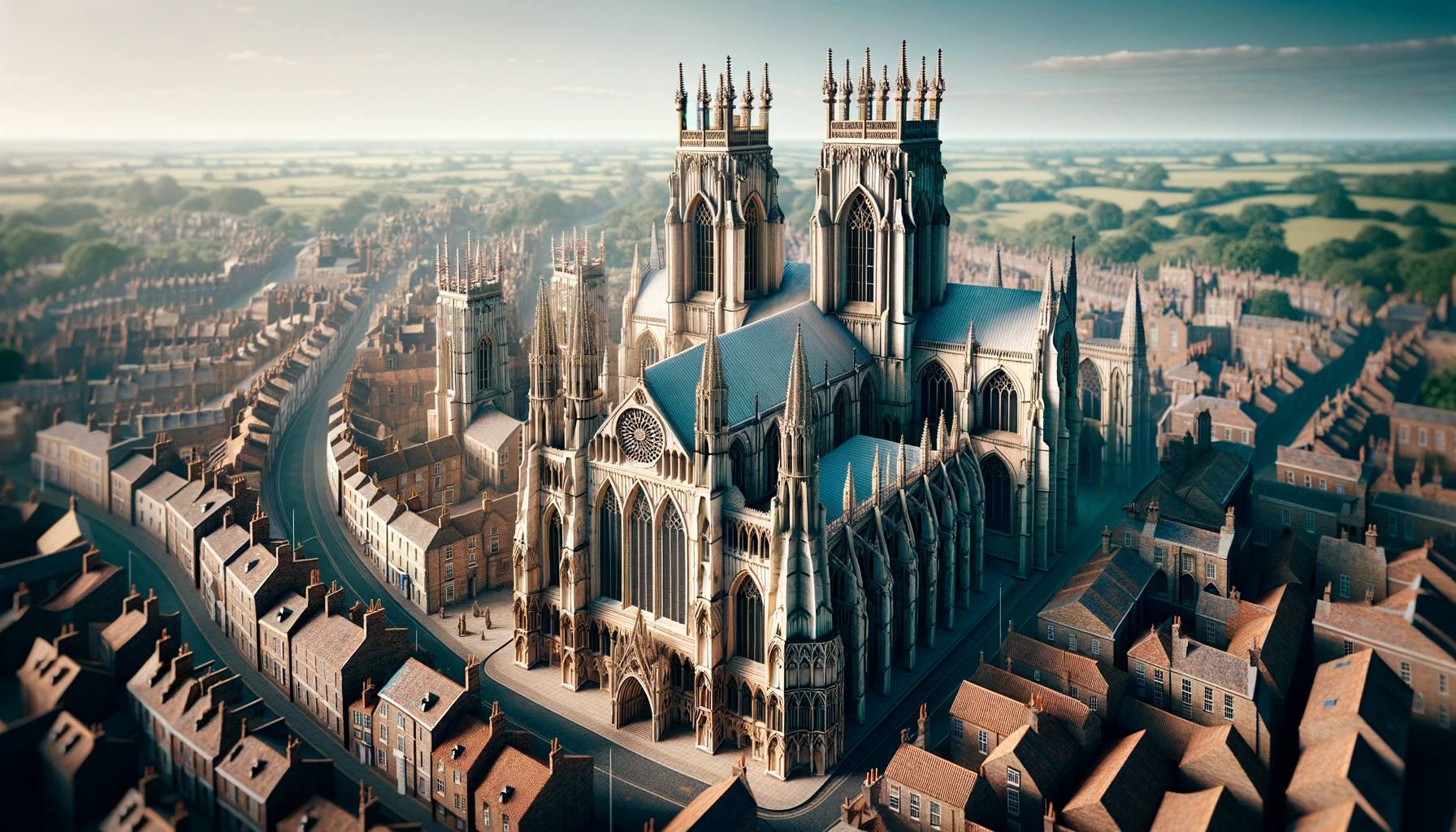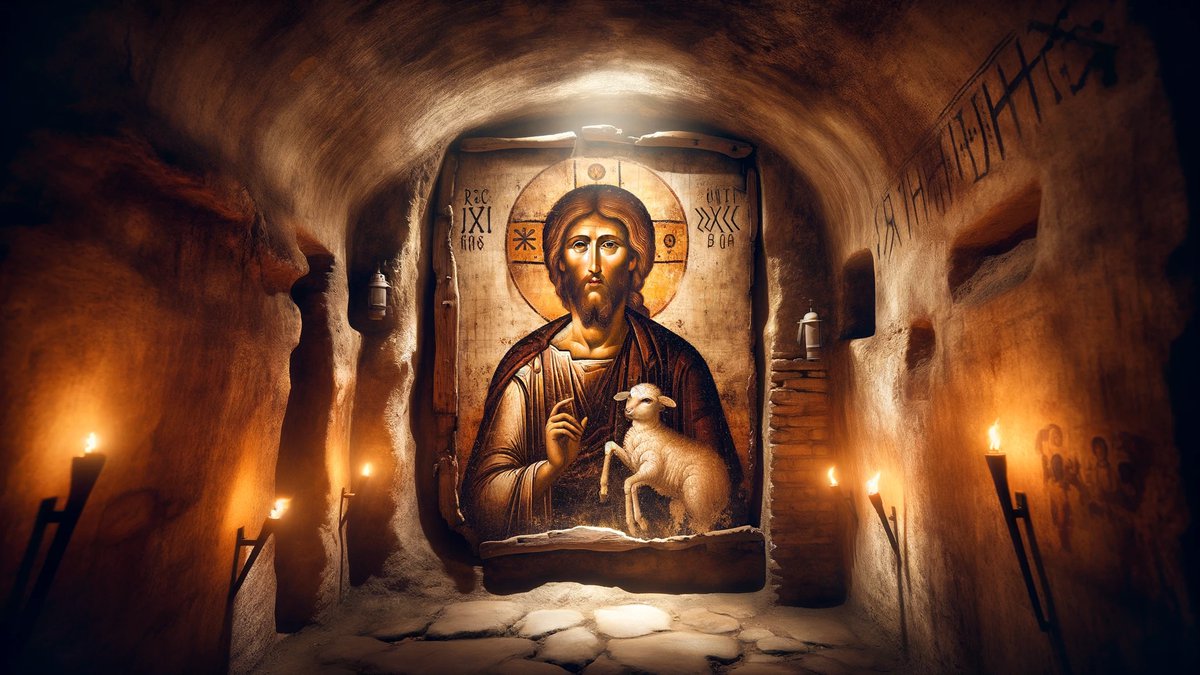Home>Arts and Culture>What Is The Oldest Cathedral In England


Arts and Culture
What Is The Oldest Cathedral In England
Published: February 16, 2024
Ericka Andersen, an editor at Christian.net, expertly merges digital strategy with content creation, focusing on faith and societal issues. Her communication skills enhance the platform's engaging narratives, fostering meaningful dialogue on belief's impact on society.
Discover the history of the oldest cathedral in England and its significance in arts and culture. Explore the architectural marvel and rich heritage of this iconic landmark.
(Many of the links in this article redirect to a specific reviewed product. Your purchase of these products through affiliate links helps to generate commission for Christian.net, at no extra cost. Learn more)
Table of Contents
Introduction
The rich tapestry of England's cultural heritage is interwoven with the majestic presence of its ancient cathedrals. These architectural marvels stand as enduring testaments to the country's spiritual and historical legacy, drawing countless visitors to marvel at their grandeur and significance. Among these venerable structures, one holds the distinction of being the oldest cathedral in England, a beacon of antiquity and architectural prowess.
As we embark on a journey through the annals of time, we will unravel the captivating story of England's oldest cathedral, delving into its historical significance and the enduring legacy it has bestowed upon the nation. Join us as we traverse the corridors of history and uncover the profound impact of this venerable edifice, a living testament to the enduring spirit of England's cultural heritage.
Read more: What Is The Oldest Cathedral In The UK
Early Christian Influence in England
The early Christian influence in England traces its roots to the Roman occupation during the 1st century AD. Roman soldiers and settlers brought with them the teachings of Christianity, laying the foundation for the faith to take root in the region. The spread of Christianity gained momentum with the arrival of missionaries from Rome and Gaul, who ventured into the land to preach the gospel and establish Christian communities.
One of the pivotal figures in this transformative period was Saint Augustine of Canterbury, who was sent by Pope Gregory the Great to evangelize the Anglo-Saxons in the late 6th century. Augustine's mission marked a significant turning point in England's religious landscape, as he played a pivotal role in the conversion of the Anglo-Saxon kings and the establishment of the Canterbury Cathedral as the seat of the Archbishop of Canterbury.
The establishment of monasteries also played a crucial role in disseminating the tenets of Christianity across England. These monastic institutions served as centers of learning, preserving knowledge and scriptures while also actively engaging in missionary work. The monks and nuns within these monasteries dedicated themselves to scholarly pursuits, transcribing manuscripts, and spreading the Christian faith to the local populace.
The early Christian influence in England not only shaped the religious fabric of the nation but also left an indelible mark on its cultural and artistic expressions. The fusion of Roman, Celtic, and Anglo-Saxon traditions with Christian beliefs gave rise to a unique artistic style known as Hiberno-Saxon or Insular art, characterized by intricate interlacing patterns, vibrant colors, and ornate designs found in illuminated manuscripts, metalwork, and stone carvings.
As Christianity continued to take root and flourish, the stage was set for the construction of grand cathedrals and churches that would stand as enduring symbols of faith and architectural prowess. These early developments laid the groundwork for the emergence of the first cathedrals in England, marking the beginning of a remarkable architectural and spiritual legacy that continues to captivate and inspire visitors from around the world.
The Establishment of the First Cathedrals
The establishment of the first cathedrals in England heralded a new era of architectural innovation and spiritual significance. As Christianity took root and flourished across the land, the need for grand ecclesiastical structures to serve as centers of worship and administration became increasingly apparent. The evolution of these early cathedrals reflects the convergence of religious devotion, artistic expression, and technological ingenuity, culminating in the creation of awe-inspiring edifices that continue to inspire wonder and reverence to this day.
The transition from humble wooden chapels to monumental stone cathedrals marked a pivotal shift in architectural ambition and engineering prowess. The construction of these grand edifices required the collective efforts of skilled craftsmen, stonemasons, and laborers, who labored tirelessly to bring to life the visionary designs conceived by master architects. The use of innovative building techniques, such as ribbed vaults, pointed arches, and flying buttresses, allowed for the creation of soaring interiors flooded with light, evoking a sense of divine transcendence and awe.
The cathedrals also served as focal points for pilgrimage and religious devotion, drawing throngs of faithful pilgrims who sought solace, healing, and spiritual enlightenment within their hallowed precincts. These sacred sites became repositories of relics, artifacts, and religious treasures, further enhancing their allure and sanctity. The cathedrals also played a pivotal role in shaping the urban landscape, serving as vibrant hubs of cultural, educational, and charitable activities that enriched the lives of the surrounding communities.
The architectural evolution of these early cathedrals mirrored the shifting artistic and cultural currents of the times, giving rise to distinct regional styles and decorative motifs. From the austere grandeur of Norman architecture to the ornate splendor of Gothic design, each cathedral bore the imprint of the era in which it was conceived, reflecting the aspirations, beliefs, and aspirations of the people who brought it into being.
As the first cathedrals took shape across England, they became enduring symbols of spiritual devotion, architectural achievement, and communal identity. Their construction and embellishment represented a collective endeavor that transcended individual lifetimes, embodying the aspirations and faith of generations past and present. These venerable structures laid the foundation for the architectural masterpieces that would follow, leaving an indelible mark on England's cultural landscape and inspiring awe and reverence in all who beheld their magnificence.
The Oldest Cathedral in England
Amidst the storied landscape of England's architectural treasures, one cathedral stands as a timeless testament to the enduring spirit of faith and craftsmanship. The title of the oldest cathedral in England belongs to none other than the venerable Cathedral Church of St. Peter in York, commonly known as York Minster. Its hallowed precincts bear witness to centuries of history, embodying the collective aspirations and achievements of generations past.
The origins of York Minster can be traced back to the early 7th century when a wooden church dedicated to St. Peter was erected on the site. This modest beginning marked the inception of a sacred legacy that would unfold over the centuries, culminating in the resplendent cathedral that graces the city of York today. The transition from humble beginnings to architectural grandeur reflects the cathedral's enduring significance as a focal point of spiritual devotion and cultural heritage.
The architectural evolution of York Minster mirrors the passage of time and the shifting tides of history. From its humble beginnings, the cathedral underwent successive phases of expansion and renovation, each bearing the imprint of the prevailing architectural styles and artistic sensibilities. The interplay of Norman, Early English, Decorated, and Perpendicular Gothic elements imbues the cathedral with a rich tapestry of design, showcasing the ingenuity and craftsmanship of the artisans who contributed to its splendor.
The soaring nave, intricate stained glass windows, and exquisitely carved stone tracery stand as testaments to the cathedral's enduring allure and architectural prowess. The Great East Window, renowned for its dazzling medieval stained glass, and the Chapter House, adorned with delicate carvings and a magnificent vaulted ceiling, exemplify the cathedral's status as a treasure trove of artistic and cultural riches.
Beyond its architectural magnificence, York Minster holds a place of profound spiritual significance, serving as a sanctuary for prayer, contemplation, and communal worship. The ethereal strains of choral music reverberate within its sacred precincts, enveloping visitors in a transcendent aura that transcends the boundaries of time and space.
As the oldest cathedral in England, York Minster stands as a living testament to the enduring legacy of faith, artistry, and human endeavor. Its hallowed halls bear witness to the triumphs and tribulations of bygone eras, offering a glimpse into the collective journey of a nation and its people. York Minster's timeless presence continues to inspire awe and reverence, inviting visitors to partake in a profound communion with history, spirituality, and the boundless heights of human creativity.
The story of York Minster is a testament to the enduring power of architectural marvels to transcend the constraints of time, weaving together the threads of history, faith, and artistic expression into a resplendent tapestry that continues to captivate and inspire all who behold its grandeur.
Historical Significance of the Oldest Cathedral
The historical significance of the oldest cathedral in England, York Minster, transcends its architectural grandeur, encompassing a rich tapestry of cultural, religious, and historical importance. As the venerable guardian of centuries-old traditions and aspirations, York Minster stands as a living testament to the enduring spirit of faith and human endeavor.
At its core, York Minster embodies the collective memory of a nation, bearing witness to pivotal moments in England's history. The cathedral's hallowed precincts have been the backdrop for coronations, royal weddings, and solemn ceremonies, weaving together the threads of monarchy and spirituality in a seamless tapestry of national identity. The echoes of history resonate within its sacred walls, offering a tangible link to the triumphs and tribulations of bygone eras.
The cathedral's architectural splendor and artistic treasures serve as repositories of cultural heritage, preserving the legacy of master craftsmen and artisans whose skill and dedication brought York Minster to life. The intricate stone carvings, resplendent stained glass windows, and soaring vaulted ceilings bear testament to the ingenuity and creativity of generations past, inviting visitors to immerse themselves in the artistic legacy of the ages.
Beyond its role as a cultural treasure trove, York Minster holds profound religious significance, serving as a beacon of spiritual devotion and communal worship. The cathedral's sacred spaces have provided solace and inspiration to countless pilgrims and worshippers, fostering a sense of unity and transcendence that transcends the boundaries of time and creed. The ethereal strains of choral music and the soft glow of candlelight create an atmosphere of reverence and contemplation, inviting visitors to partake in a profound communion with the divine.
Moreover, York Minster's enduring presence has weathered the storms of history, bearing witness to the resilience and fortitude of the human spirit. From the ravages of war and conflict to the ravages of time and nature, the cathedral has stood as a symbol of resilience and hope, inspiring generations to persevere in the face of adversity.
In essence, the historical significance of York Minster extends far beyond its architectural magnificence, encompassing the collective memory, cultural heritage, and spiritual legacy of a nation. Its enduring presence continues to inspire awe and reverence, inviting visitors to embark on a journey through time and faith, and to discover the profound resonance of England's oldest cathedral.
Read more: What Is The Oldest Cathedral In The World
Conclusion
In conclusion, the journey through the annals of England's oldest cathedral, York Minster, has unveiled a captivating narrative of faith, artistry, and historical resonance. From its humble origins in the early 7th century to its current status as a venerable architectural masterpiece, York Minster stands as a testament to the enduring spirit of human creativity and spiritual devotion.
The cathedral's rich tapestry of history, cultural significance, and architectural grandeur embodies the collective aspirations and achievements of generations past, offering a profound glimpse into the evolving landscape of England's cultural heritage. York Minster's enduring presence serves as a bridge between the past and the present, inviting visitors to partake in a timeless communion with history, spirituality, and the boundless heights of human creativity.
As the oldest cathedral in England, York Minster continues to inspire awe and reverence, serving as a living repository of the nation's cultural and religious legacy. Its hallowed precincts bear witness to the triumphs and tribulations of bygone eras, offering a tangible link to the collective journey of a nation and its people. The cathedral's architectural splendor, artistic treasures, and profound spiritual significance converge to create an immersive experience that transcends the constraints of time and space.
Moreover, York Minster's enduring presence has weathered the storms of history, standing as a symbol of resilience and hope in the face of adversity. Its timeless allure continues to captivate and inspire visitors from around the world, inviting them to embark on a journey through time and faith, and to discover the profound resonance of England's oldest cathedral.
In essence, the story of York Minster is a testament to the enduring power of architectural marvels to transcend the confines of time, weaving together the threads of history, faith, and artistic expression into a resplendent tapestry that continues to captivate and inspire all who behold its grandeur. As visitors stand in awe of its soaring spires and intricate carvings, they become part of a living legacy that transcends generations, inviting them to immerse themselves in the timeless embrace of England's oldest cathedral.














